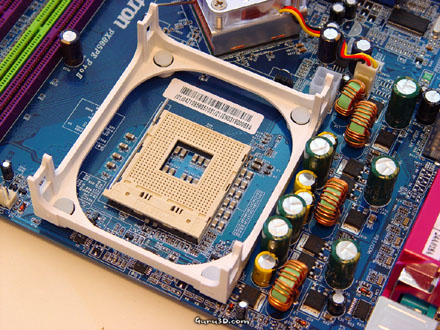Page 8 - Test System Info
RGSS - Rotated Grid Supersampling is a technique used by ATI's current line-up. It is somewhat similar towards Ordered Grid SS yet it does not up-sample the scene towards a higher resolution. Nope, it takes two or four copies of the 3D scene
Two, four, six or eight copies of the scene at screen resolution, then takes the scene's geometry and moves it slightly away in two, four, six or eight directions depending the number of copies made. The pixels from these moved 3d scene copies are then averaged to produce the final pixel value.
RGMS - Now then; still with me ? It's time for the third method. Both OGSS and RGSS are a tad less accurate then RGMS, and they take up loads of memory and bandwidth. Ever since DirectX 8 was released there was a new technology introduced, multi-sampling. Unlike super-sampling, multisampling uses the color from the original sample for all sub-samples. Now GeForce 4 had a combination of multisampling and super sampling techniques available (4/6/8xS). To be talk bit more Guru'ish, it is super sampling applied to blocks processed by multisampling. Supersampling will make textures look sharper, these methods should smooth polygons edges quite well thanks to the increased number of samples.
NVIDIA now goes RGMS on the GeForce Series 6 silicon - Rotated Grid Multi Sampling. nVidia's version of multisampling is based on generating four samples per pixel, but instead of obtaining a separate color value for each sub-sample, it instead "reuses" sub-samples from neighboring pixels to attain higher quality but with less of a frame-buffer bandwidth hit.
Based on four samples per pixel where in the past four subpixels were sampled in a two-by-two grid pattern for each pixel. When you slightly rotate the pattern of the four subpixels, the new antialiasing scheme provides sampling from a four-by-four diamond-shaped grid. The rotated-grid configuration allows superior subpixel coverage in horizontal and vertical dimensions. This increased coverage guarantees better and thus higher color accuracy at the edges of polygons.PerformanceWe can now offer you an update in this article in which we handled quite a bunch of benchmarks, but first let me show you our test system.
| Test system |
|
Benchmark Software Suite:
* For four of these games we are making use of a custom time demo. Neither NVIDIA nor ATI knows what time demo we are using. These are non-public tests that were recorded for us only. We are not going to make them public either as they are and will remain internal material. Therefore the chipset manufacturer will not have the chance of optimizing it to that specific benchmark time-demo. We will do our very best now and in the future to keep a close eye on optimizations and cheats, we need to be able to show you objective results. However in the end this should be a responsibility for the chipset designer, if that entity fails to do so, then it'll lose consumer's trust and will dig it's own grave. |
Enough talk, let's have a look at some photo's first after the benchmarks will follow.

